To trace back the history of boatbuilding, you’d first have to build a time machine and travel back some 8000 years. Once there (according to the earliest recovered archaeological evidence), you’d likely find boats made from hollowed out logs used to cross rivers and travel short distances. Things have obviously changed drastically over the millennia, and today boats most typically are constructed out of wood, fiber reinforced plastic, composites, or a combination of all three. So while there are plenty of other ways to build a boat using aluminum, steel, wood planks, and even cement, we’ll cover the boatbuilding basics of fiberglass composites, and wood building methods for your reading pleasure. Learn more about boatbuilding projects around the Bay in our Boatshop Reports.
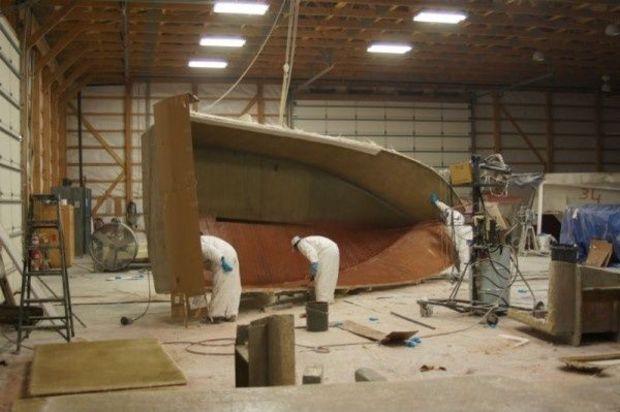
Cold Molding
Cold molding utilizes two or more wood “veneers” that are attached to a pre-fabricated jig to create the shape of a hull. The veneers themselves are generally glued together using epoxy resin, and the outside of the formed veneer hull often is reinforced with layers of epoxy resin and fiberglass on both the inside and outside for strength and protection. Almost all custom Carolina-style sportfishing yachts are built using this method as different jigs can be constructed for each unique build, eliminating the need for expensive fiberglass tooling (molds) that is difficult to modify.
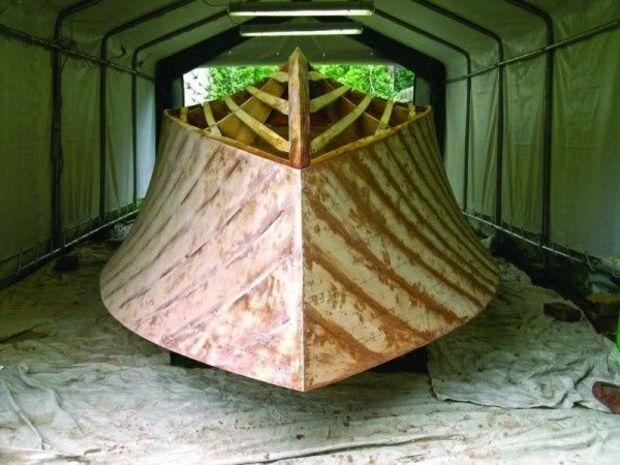
First, a tooling part called a jig (sometimes with reinforcing longitudinal pieces for the hull embedded) is constructed that essentially forms the outside hull shape of the boat. Next, two or more layers of wood veneers are attached to the hull in opposite directions using screws with epoxy resin in between. Once the epoxy has cured, fiberglass can be added and the shape is faired and sanded. The hull is then flipped and much of the jig removed and discarded so fiberglass or structural reinforcements can be fitted to the hull interior, and interior construction can begin. The deck and cabin are built in much the same way. Some premier cold molding builders include Weaver Boatworks, F&S Boatworks, Spencer, and Jarrett Bay.
Fiberglass
Fiberglass is actually short for “fiber reinforced plastic,” referring to the various weaves of glass fiber cloth that are laid down in alternating layers with any number of resins such as polyester, vinylester, or epoxy. Fiberglass boat construction became popular in the 1960s and today is perhaps the most common way production boats are built. Upsides to this method include relatively low maintenance, high strength, ease of repair, and generally low cost when compared to other boatbuilding materials. Primary downsides are osmotic blistering in some hulls and sometimes heavy weight (unless used with composite materials).
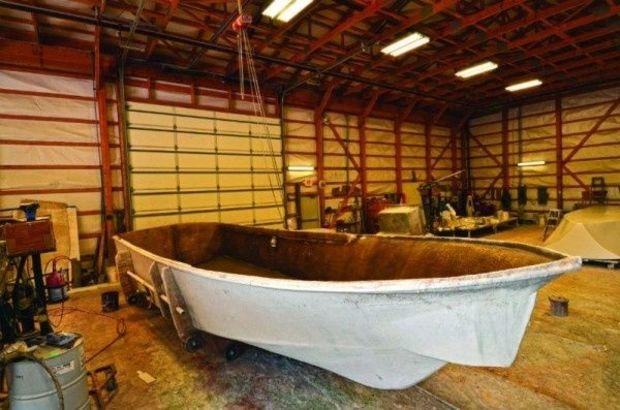
Most fiberglass boats are built from a female mold that accepts multiple layers of fiberglass cloth or matt and resin that eventually cure together to form a hull shape. First, the mold is cleaned and prepped with a mold release wax that allows what will become the fiberglass hull to be pulled from the mold without sticking. Next, a thick layer of high-quality resin called gelcoat is sprayed into the mold. This is the tough, glossy, exterior finish that protects the fiberglass from ultraviolet rays, salty spray, fish guts, beer, and abrasion.
Before the gelcoat cures, a layer of catalyzed resin (polyester resin is catalyzed using methyl ethyl ketone peroxide, while epoxy resins are usually a 50/50 mix of two parts) is applied, and then alternating layers of fiberglass cloth and catalyzed resin are laid down to build up a laminate. The resin by itself isn’t especially strong in a physical sense, but it does bond incredibly well to itself and when multiple layers of fiberglass are added you get a very strong structure. Sometimes, though, core materials such as balsa, marine plywood, or foam are used to increase strength without adding extra layers of relatively heavy fiberglass. You’ll typically see this method used in areas like the transom, topsides, or deck. Some boats use composites in throughout in both the hull and deck. Even with solid fiberglass hulls, stringers and bulkheads are used to provide a strengthening gird that keeps the fiberglass laminate from flexing too much.
Fiberglass/Composite
When folks refer to composite boat construction, they typically are talking about the method of sandwiching composite materials such as Corecell, Divinycell, or Coosa (to name a few) between layers of fiberglass to create a strong, lightweight structure. Pros for this type of construction are its immense strength but lightweight qualities, which mean a boat that typically weighs 20,000 pounds can be constructed to weigh 12,000 pounds. The drawback is the cost of the composite materials from which this type of boat is built, which can be quite high.
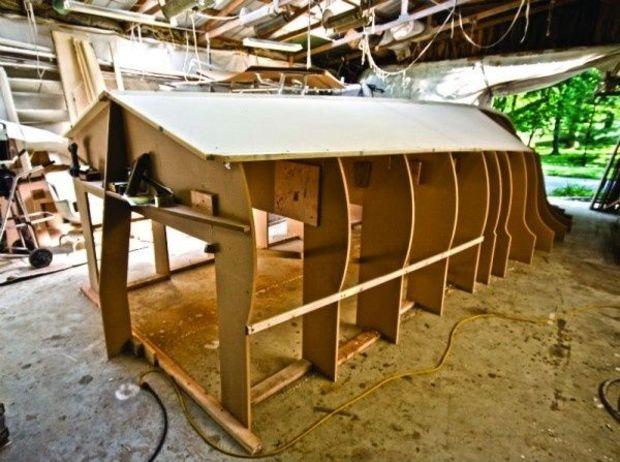
A completely composite hull and deck are generally built much like a cold-molded boat (see above), but instead of wood veneers being attached to the jig to form the shape, sheets, panels, and strips of composite foam are used and glued together. Once the shaped of the hull has been achieved, multiple layers of fiberglass and epoxy are applied. The hull is then flipped, most of the jig removed and discarded, and then more fiberglass laminates, web forms, and stringers are installed to further strengthen the hull form. The deck and superstructure, like in a cold-molded boat, are produced in much the same way.
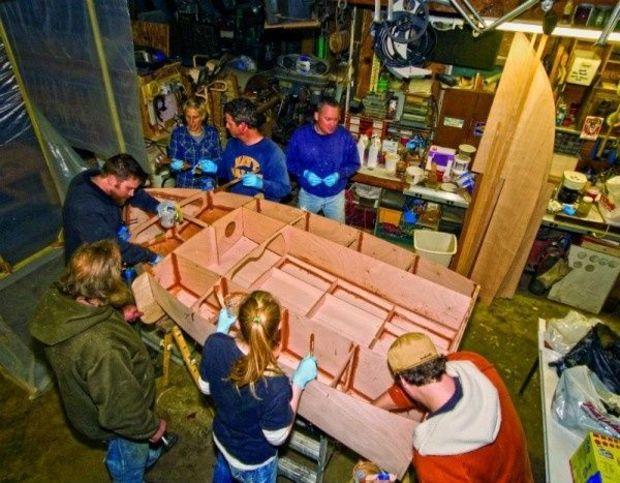
Stitch and Glue
This method, popularized mainstream by the easy-to-build kits produced by Chesapeake Light Craft, is how PropTalk’s Cocktail Class Racer Molotov was built. Pieces of marine-grade plywood are cut into precise pieces that form frames, decks, cockpit, and hull, all held together with fiberglass and epoxy, though initially held together with copper ties or “stitches.”
A stitch-and-glue boat is somewhat like a cold-molded boat in that veneers—in this case, marine-grade plywood—are attached to a jig that forms the hull shape. But unlike a cold molded boat, the jig also serves as the boat’s structural framing and remains part of the boat. The outside panels, which form the hull and deck shape, are temporarily “stitched” together and to the structural pieces before beads of thickened epoxy called “fillets” are applied to the joints. Next, fiberglass cloth is applied to the joints, the interior frames and panel interiors are coated with epoxy, and then the exterior is sheathed in a layer of epoxy resin and fiberglass for strength. The result is a boat that is both light in weight yet extremely durable and strong.
Story by Gary Reich